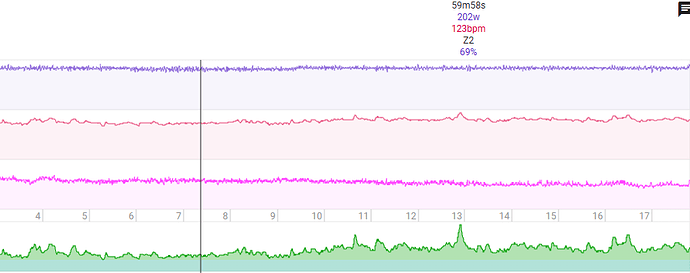Hi All. Sorry in advance if this is a long post, but I’m looking for some advice on HR and power zones for Zone 2 cycling.
I am a relatively well-trained cyclist, currently sitting at an FTP of 290w, which puts me at 4.3w/kg. I ride around 6-8 hours a week, mostly indoors. I had been feeling tired and over trained, and some life and work stress which led me to recently taking a week off the bike entirely. This felt great. Also, my wife and I are expecting our first baby in February 2025. With that in mind, I have decided to do only Zone 2 training for a few months to help rid my body of stress ahead of becoming a new dad!
I researched Maffetone style training which sounded like just what I needed, and although my MAF 180 HR is 146 (180-34 years old) this is actually my heart rate when I’m riding in Sweet Spot, so obviously too high for Zone 2. I researched this specifically for cycling and found that usually this needs to be reduced by 10-15 bpm as cycling tends to produce lower HR numbers than running. I therefore landed on a MAF number of 131, which is more like what I see when in the upper end of my zone 2 power range.
I created some HR+ workouts using the Maffetone warm up and cooldown, with the main section of the workout in HR+ mode set at 128bpm to keep things under my MAF heart rate. The HR+ system itself is excellent, adjusting the erg on my Wattbike really smoothly and gently adapting power to affect my HR.
I think, however, that my HR zones and power zones are out of whack with each other. For example, to stay at 128bpm, which is lower than even my reduced MAF HR (and the middle of my Coggan Zone 2 HR) I have to ride a bit at tempo (220-230 watts) and/or the very top end of my zone 2 power (around 216 watts). This in itself can be rather demanding on a trainer for 90 minutes, and not the “easy” riding I expected from this MAF style of training… ![]()
…or maybe I’m wrong and I really should be riding at the higher end of my Z2 power?
My Coggan HR zone (60%-70% of my MAX HR of 188) is 113bpm to 132bpm.
I’m a bit unsure of how best to approach this. Should I just ride in the middle of Coggan zone, setting HR+ mode to 123 bpm? This would certainly feel easier. Any advice/insight would be much appreciated.


